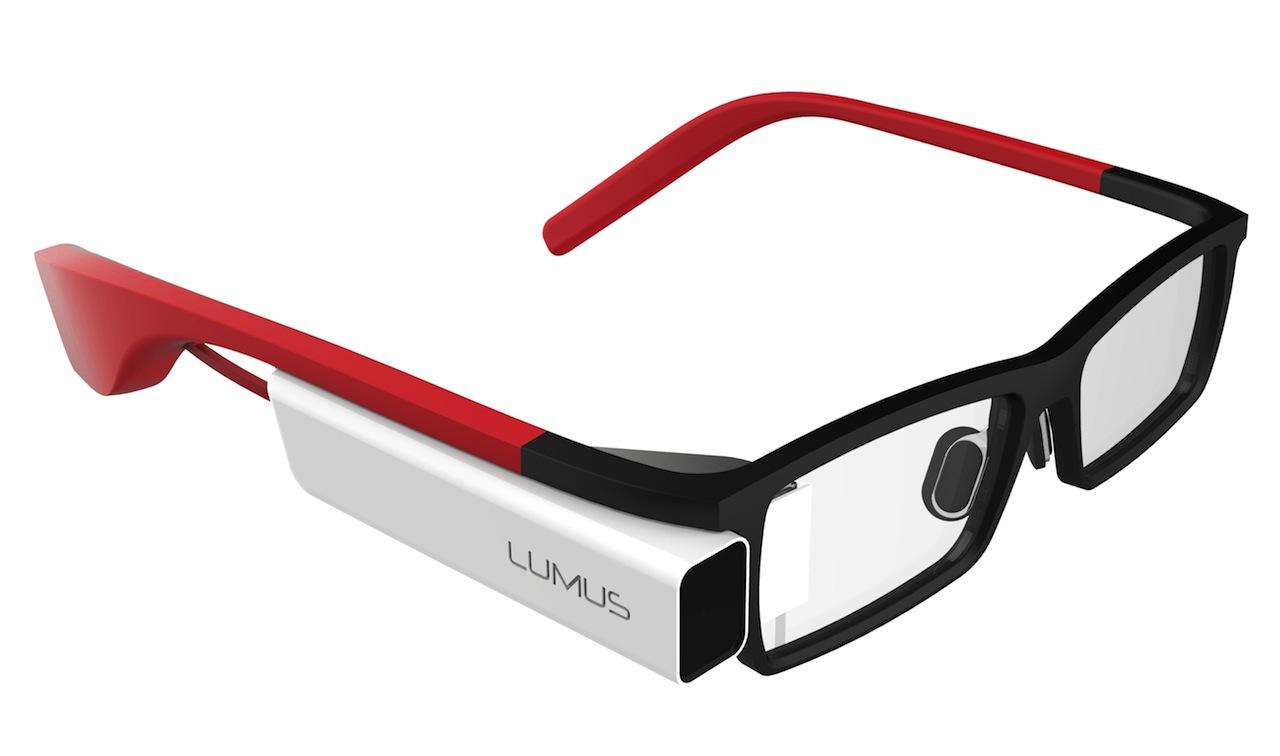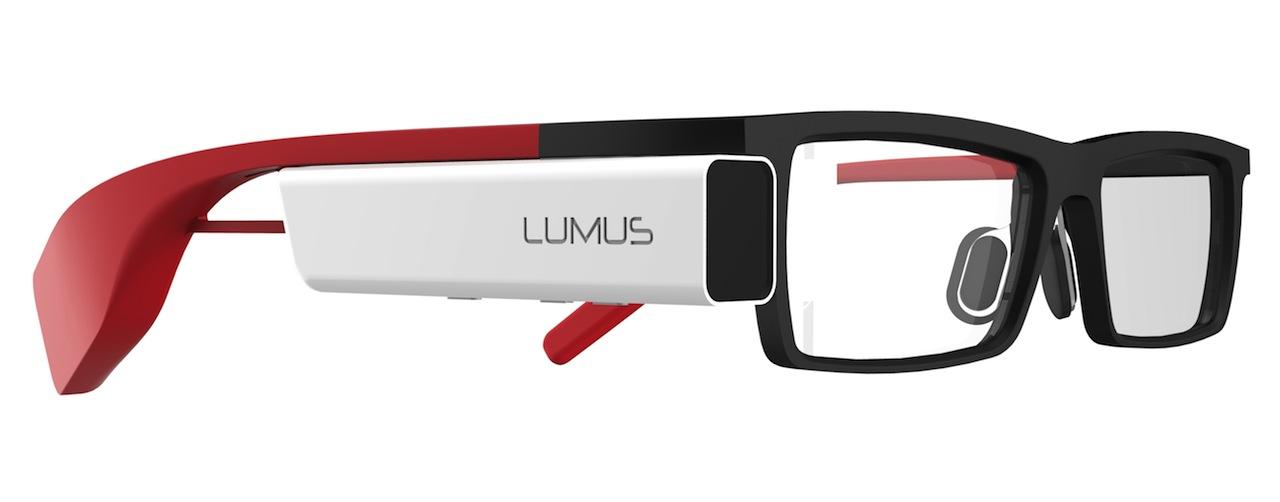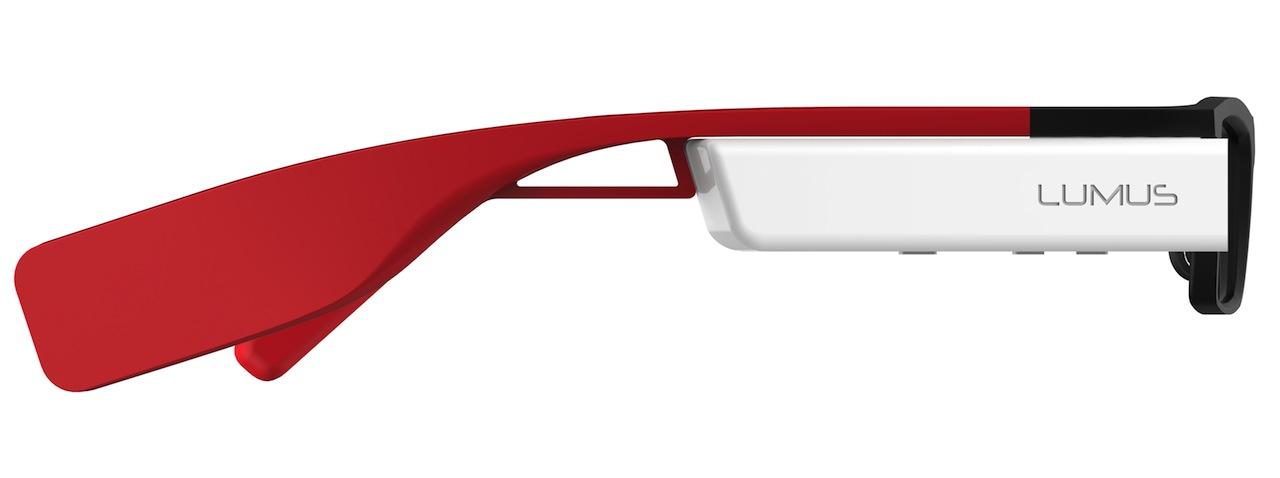Lumus DK-40 takes on Glass with true AR
Transparent display specialist and military head-up screen supplier Lumus is wading into the wearable computing market, revealing a new developer kit that, unlike Google's Glass, offers full augmented reality support. Set to debut at CES 2014 next month, the Lumus DK-40 monocular dev kit may look ostensibly like Glass at first glance, but where Google's headset has a small display-block suspended in the corner, the entire right lens of the Lumus wearable is in fact a 640 x 480 display. That means developers building apps for the Android-powered headset can overlay graphics directly on top of the real-world view, rather than simply sliding in separate notifications as Glass does.
Lumus might not be the household name that Google is, but it has some history in wearable displays. The company developed a patented "Light-guide Optical Element" (LOE) – in effect a tiny projector that projects onto a special lens so that the computer-generated image is see-through – and has been supplying it to industrial and military customers for some years, including the helmet displays the US Air Force has deployed in the F-16 and A-10.
The company's consumer plans have been a little later to the game, and in fact Lumus still doesn't intend to commercially produce a mass-market wearable computer. Instead, it's aiming to promote the adoption of its lens technology by other OEMs, with the DK-40 dev kit a tool to show application authors exactly what can be achieved when you can integrate digital graphics with the real-world view.
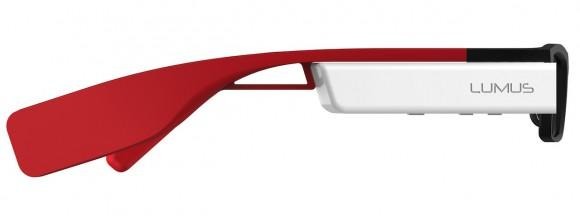
Whereas the last Lumus prototype we saw – the OE-31 wearable display back in March 2012 – was somewhat geeky in its appearance, the DK-40 could almost be mistaken for a chunky set of regular eyeglass frames. The VGA-resolution display with 25-degree field of view is integrated into the right lens, while the block section on the side accommodates the 5-megapixel camera, processor, battery, and sensors.
Android runs on an OMAP processor – Lumus isn't saying which one specifically – and there's a motion sensor with 9 degrees-of-freedom to do precise head tracking, important when you want to exactly match what's on-screen with what's in front of the wearer. Lumus is billing the DK-40 as completely wire-free, though not commenting on battery life expectations as yet.
Update: Lumus tells us that very early tests on the DK-40 prototype suggest at least 1-2 hours of runtime.
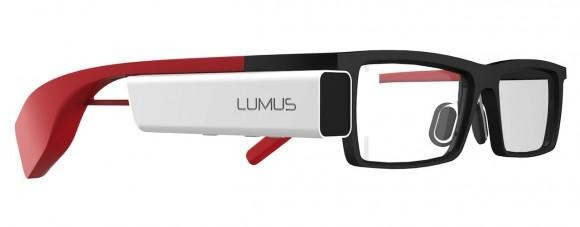
For developers, there'll be an SDK to get them up to speed with coding Android apps to take advantage of the platform, though Lumus is clear that this is a jump-starting measure for OEMs rather than a sign that it itself is getting into the consumer business.
It's not the first lens-as-display wearable we've seen in recent months, though it's perhaps one of the more aesthetically appealing (albeit in render form as seen here). Meta 1, for instance, has its developer kit on sale, backed by "father of augmented reality" Steve Mann; that has two transparent screens, one for each eye, unlike the single-display Lumus.
Unfortunately, while Lumus intends to start shipping the DK-40 monocular dev kit at the end of Q1 2014, it will only be offered to OEMs and "select developers" the company tells us. The end-goal is still to sell the displays to other companies who will put them into their own consumer products, with a few leading names said to be onboard but nothing publicly announced yet; it's also not saying publicly how much the developer kit will cost. We'll be stopping by to catch up with the Lumus team at CES in a just a few weeks time, to see how the DK-40 holds up to Glass and other attempts at wearable computing.

